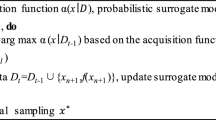Abstract
This study presents a hybrid data-driven machine learning framework utilizing Bayesian regularization-based artificial neural network (ANN) and genetic expression programming (GEP) to develop a robust prestressing loss mathematical model. The proposed framework utilizes a surveyed database of experimentally measured losses of 113 prestressed concrete girders. In addition, this study utilizes the experimental database to evaluate the prediction accuracy of the adopted procedures in design provisions (PCI and AASHTO LRFD). The study shows that the currently adopted procedures result in either inconsistent accuracy or an overestimation of the prestressed losses. On the other hand, the proposed model demonstrated higher accuracy and consistent prediction with respect to all variables. The proposed model resulted in an average predicted-to-measured ratio of 1.03 and a standard deviation of 0.20. The study provides a parametric study to quantify the contribution of each of the included variables that revealed that girder height h, area of prestressing reinforcement Aps, and moment due to dead load Mg are the most influential parameters in the estimation. Furthermore, a statistical evaluation of the different prestress loss estimation methods utilizing Bayesian parameter estimation demonstrated the robustness of the proposed method compared to the existing approaches.















Similar content being viewed by others
Data Availability
The data that support the findings of this study are available from the corresponding author upon reasonable request.
References
Dolan, C.W.; Hamilton, H.R.: Prestressed Concrete. Springer International Publishing, USA (2019)
Garber, D.B.; Gallardo, J.M.; Deschenes, D.J; Bayrak, O.: Prestress loss database for pretensioned concrete members. Struct. J. 113(2), 313–324 (2016). https://doi.org/10.14359/51688618
Precast and prestressed concrete institute (PCI), “PCI design handbook,” seventh edition, precast and prestressed concrete institute (PCI), Chicago, IL, 2010, pp. 5–87.
American association of state highway and transportation officials (AASHTO), “AASHTO LRFD Bridge Design Specification, Customary U.S. Units, 6th Edition,” Washington, DC, 2012.
Liu, F.; Ding, W.; Qiao, Y.; Wang, L.: An artificial neural network model on tensile behavior of hybrid steel-PVA fiber reinforced concrete containing fly ash and slag power. Front. Struct. Civ. Eng. 14(6), 1299–1315 (2020)
Deb, P.; Pal, S.K.: Interaction behavior and load sharing pattern of piled raft using nonlinear regression and LM algorithm-based artificial neural network. Front. Struct. Civil Eng. 1–18, 1181 (2021)
Khademi, F.; Akbari, M.; Jamal, S.M.; Nikoo, M.: Multiple linear regression, artificial neural network, and fuzzy logic prediction of 28 days compressive strength of concrete. Front. Struct. Civ. Eng. 11(1), 90–99 (2017)
Report of the Joint ACI-American Society of Civil Engineers Committee on Prestressed Reinforced Concrete: Tentative recommendations for prestressed concrete. J. Struct. Div. 84(1), 1519–1521 (1958)
Birrcher, D.B.: Effects of Increasing the Allowable Compressive Stress at Release of Prestressed Concrete Girders. The University of Texas at Austin, Austin (2006)
Erkmen, B.; Shield, C.K.; French, C.E.: Time-dependent behavior of full-scale self-consolidating concrete precast prestressed girders. Spec. Publ. 1(247), 139–154 (2007)
Garber, D.; Gallardo, J.; Deschenes, D.; Dunkman, D.; Bayrak, O.: Effect of New Prestress Loss Estimates on Pretensioned Concrete Bridge Girder Design. The University of Texas at Austin, Center for Transportation Research (2012)
Gross, S. P., & Burns, N. H. (2000). Field Performance of Prestressed High Performance Concrete Highway Bridges in Texas. Austin: Texas Department of Transportation.
Hale, W.M.; Russell, B.W.: Effect of allowable compressive stress at release on prestress losses and on the performance of precast prestressed concrete bridge girders. PCI J 5(1), 14–25 (2006)
Idriss, R.L.; Solano, A.: Effects of steam curing temperature on early prestress losses in high-performance concrete beams. Transp. Res. Record 1813(1), 218–228 (2002)
Larson, K.H.: Evaluating the Time-Dependent Deformations and Bond Characteristics of a Self-Consolidating Concrete Mix and the Implication for Pretensioned Bridge Applications. Kansas State University, Manhattan, Kansas (2006)
Tarawneh, A., Almasabha, G., Alawadi, R., & Tarawneh, M. (2021, August). Innovative and reliable model for shear strength of steel fibers reinforced concrete beams. In Structures (Vol. 32, pp. 1015–1025). Elsevier.
Murad, Y., Tarawneh, A., Arar, F., Al-Zu'bi, A., Al-Ghwairi, A., Al-Jaafreh, A., & Tarawneh, M. (2021, October). Flexural Strength Prediction for Concrete Beams Reinforced with FRP Bars using Gene Expression Programming. In Structures (Vol. 33, pp. 3163–3172). Elsevier.
Gandomi, A.H.; Roke, D.A.: Assessment of artificial neural network and genetic programming as predictive tools. Adv. Eng. Softw. 88, 63–72 (2015)
Dwairi, H.M.; Tarawneh, A.N.: Artificial neural networks prediction of inelastic displacement demands for structures built on soft soils. Innov. Infrastruct. Solut. 7(1), 1–15 (2022)
Gholizadeh, S.; Fattahi, F.: Damage-controlled performance-based design optimization of steel moment frames. Struct. Design Tall Spec. Build. 27(14), e1498 (2018)
Gholizadeh, S.; Mohammadi, M.: Reliability-based seismic optimization of steel frames by metaheuristics and neural networks. ASCE-ASME J. Risk Uncertain. Eng. Syst. Part A: Civil Eng. 3(1), 04016013 (2017)
Gholizadeh, S.; Salajegheh, E.: Optimal design of structures for earthquake loading by self organizing radial basis function neural networks. Adv. Struct. Eng. 13(2), 339–356 (2010)
Ge, Q.; Menendez, M.: Extending Morris method for qualitative global sensitivity analysis of models with dependent inputs. Reliab. Eng. Syst. Saf. 162, 28–39 (2017)
Kruschke, John. "Doing Bayesian Data Analysis: A Tutorial with R, JAGS, and Stan." (2014).
Dellaportas, P.; Forster, J.J.; Ntzoufras, I.: On Bayesian model and variable selection using MCMC. Stat. Comput. 12(1), 27–36 (2002)
Author information
Authors and Affiliations
Corresponding author
Rights and permissions
Springer Nature or its licensor (e.g. a society or other partner) holds exclusive rights to this article under a publishing agreement with the author(s) or other rightsholder(s); author self-archiving of the accepted manuscript version of this article is solely governed by the terms of such publishing agreement and applicable law.
About this article
Cite this article
Tarawneh, A., Saleh, E., Almasabha, G. et al. Hybrid Data-Driven Machine Learning Framework for Determining Prestressed Concrete Losses. Arab J Sci Eng 48, 13179–13193 (2023). https://doi.org/10.1007/s13369-023-07714-y
Received:
Accepted:
Published:
Issue Date:
DOI: https://doi.org/10.1007/s13369-023-07714-y




